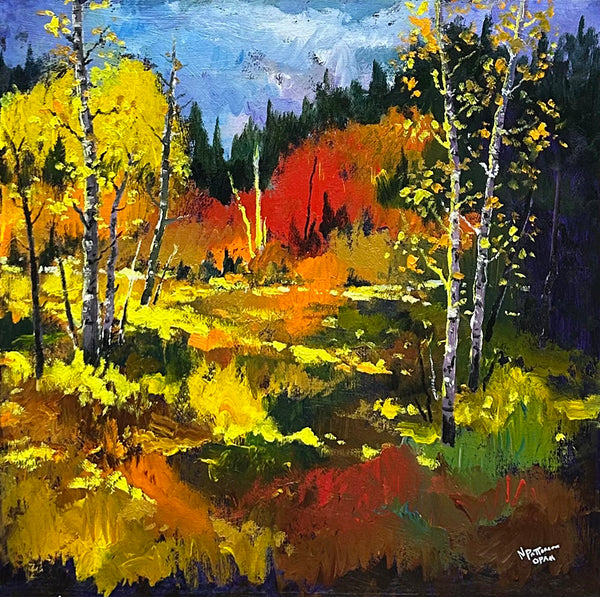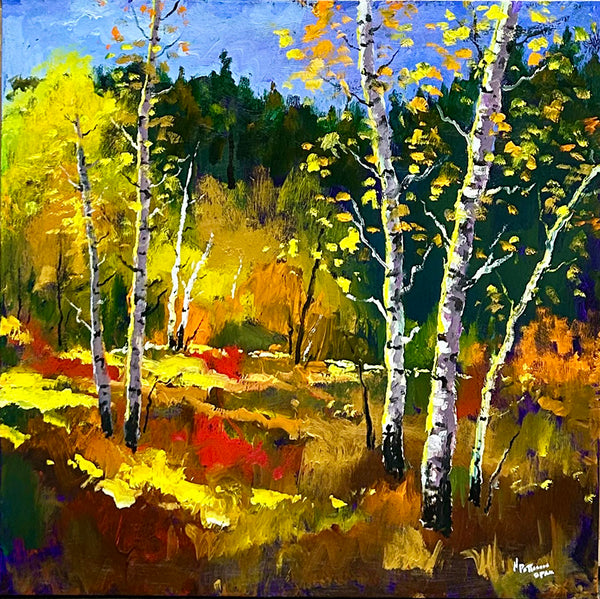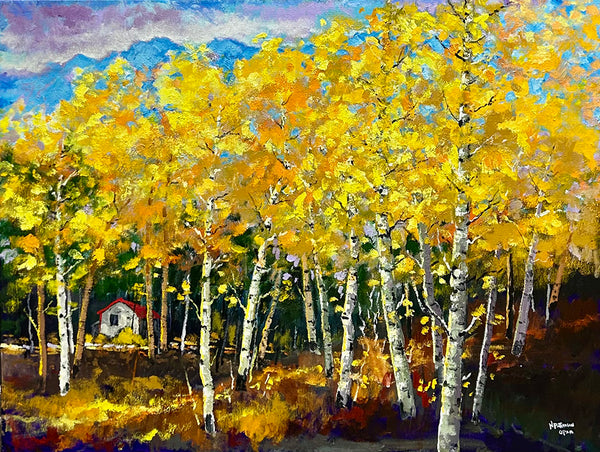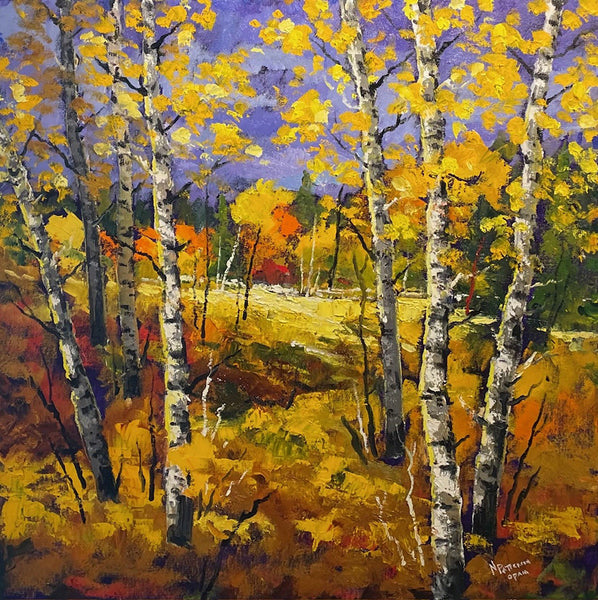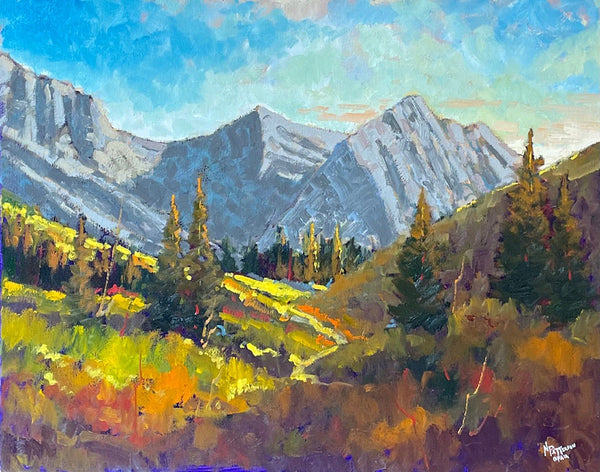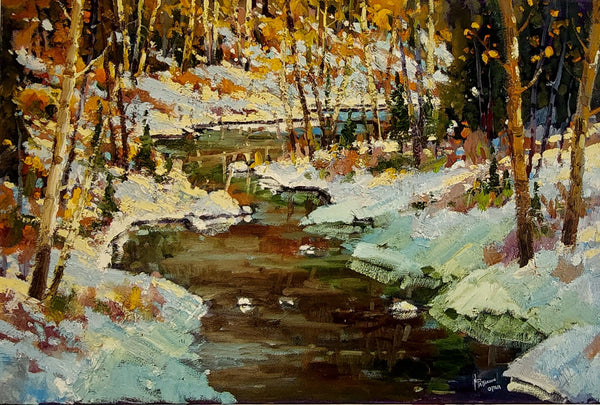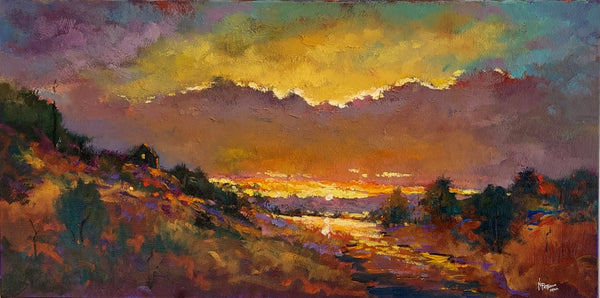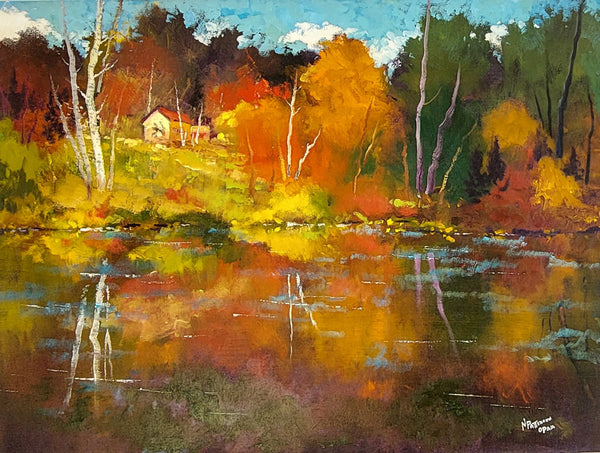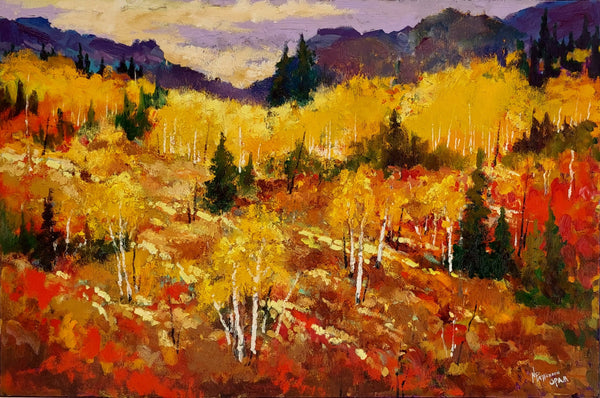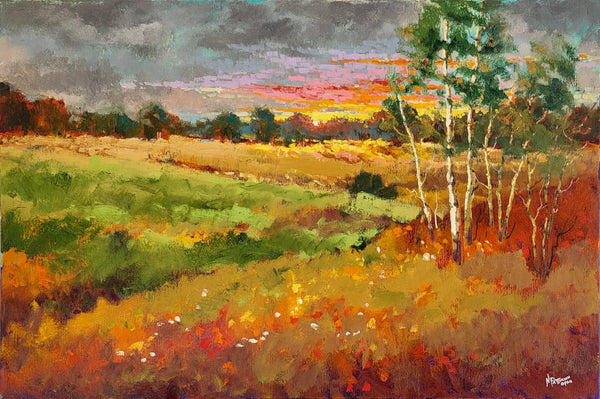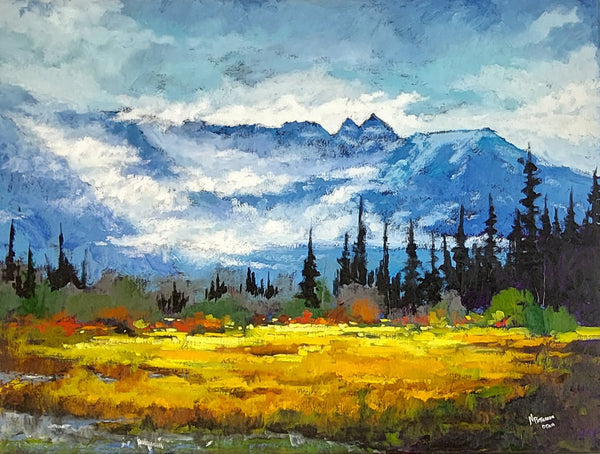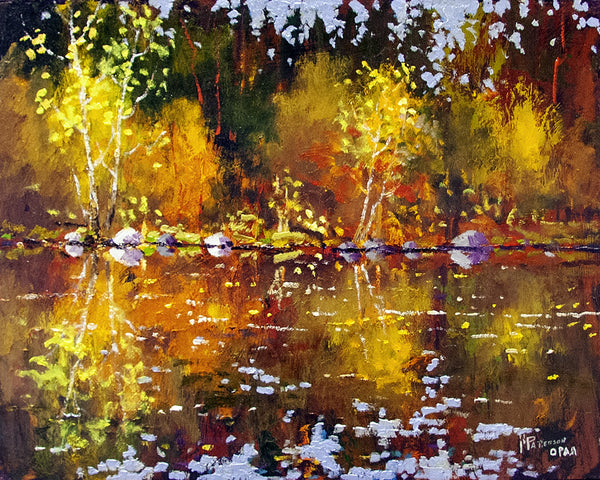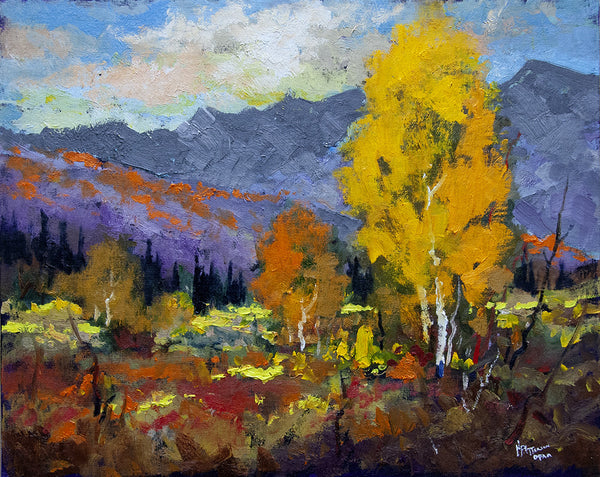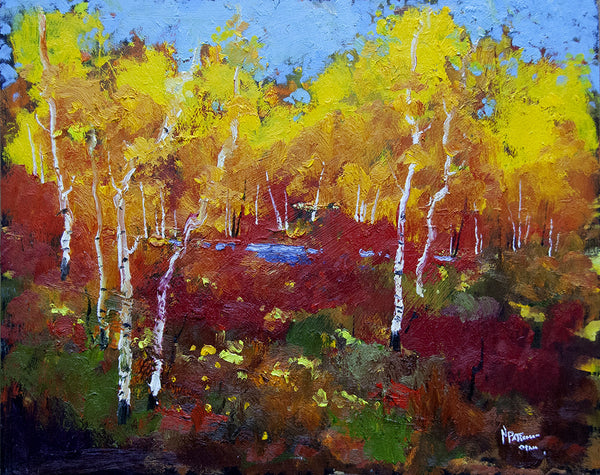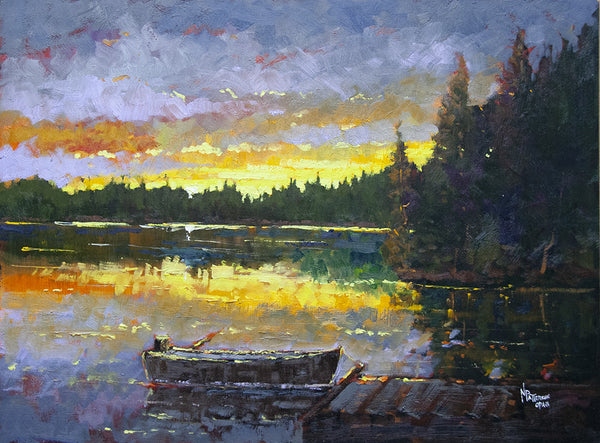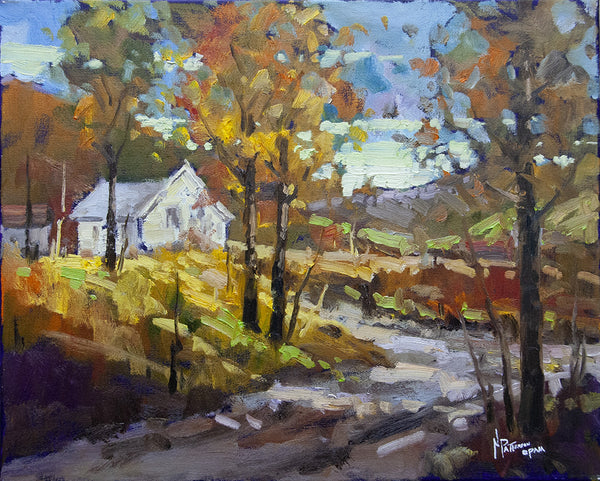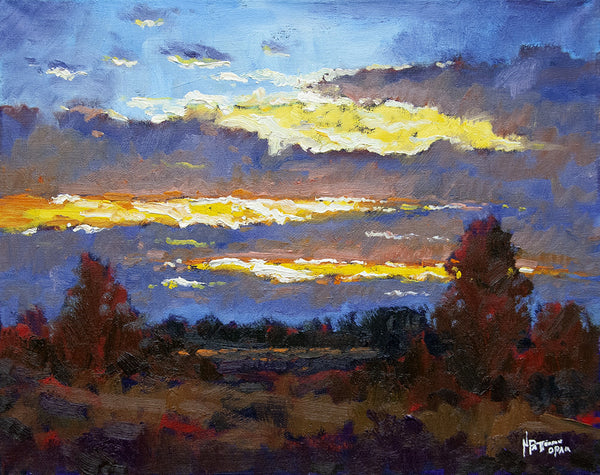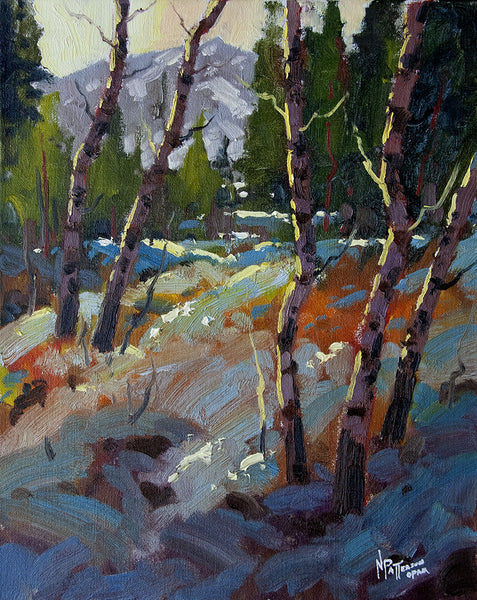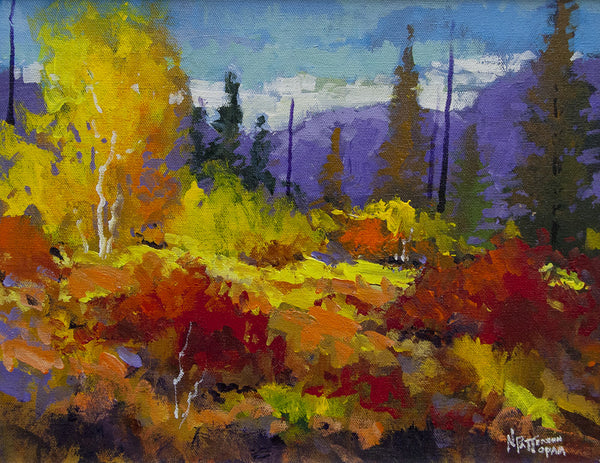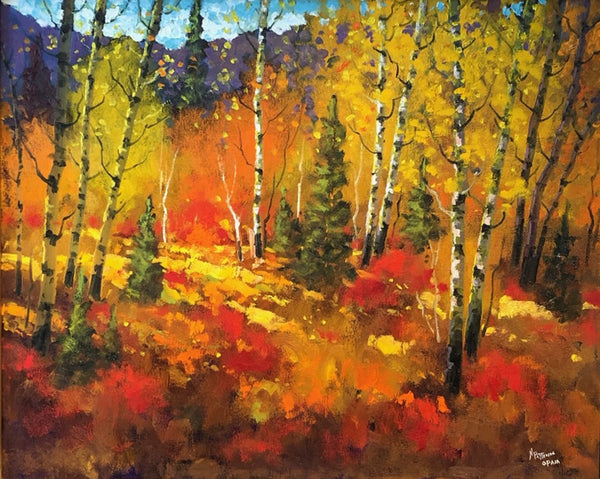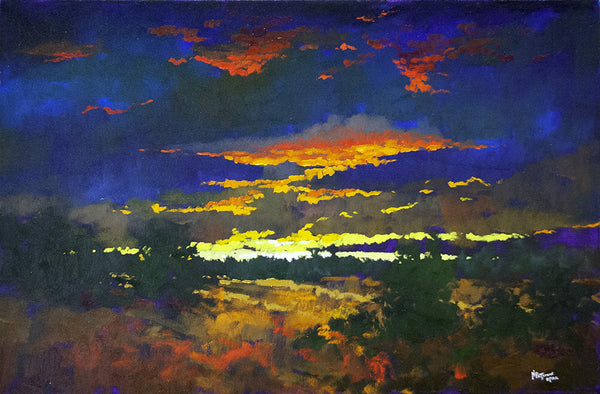Neil Patterson
Neil Patterson (b. 1947, Moose Jaw, SK) is a Canadian painter based in Bragg Creek, AB. Known for his bold use of colour and impressionistic Alla Prima technique, he captures landscapes and florals with expressive, spontaneous brushwork. A Master Signature Member of the Oil Painters of America, he was the first Canadian to earn this distinction. Patterson has exhibited widely across North America and is a member of the Alberta Society of Artists and the Federation of Canadian Artists. Inspired by childhood memories and emotional connections to nature, he describes painting as a liberating and intuitive process—"like being a kid again, playing with paint instead of toys."
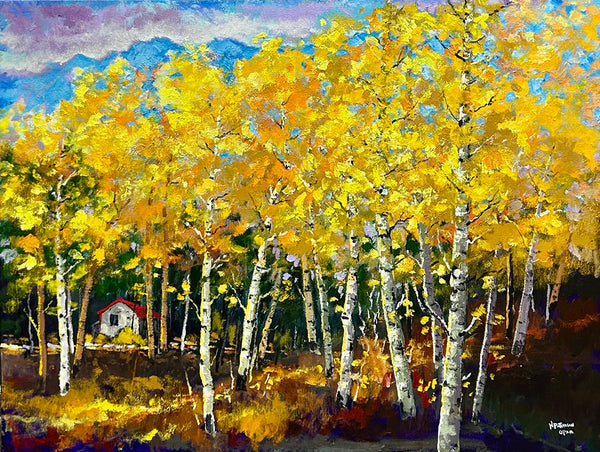
24 X 24 in.
- $3,200 CAD
24 X 24 in.
- $3,200 CAD
30 X 40 in.
- $5,900 CAD
24 X 24 in.
- $3,200 CAD
24 X 30 in.
- $4,225 CAD
24 X 36 in.
- $4,000 CAD
20 X 40 in.
- $4,920 CAD
30 X 40 in.
- $5,900 CAD
24 X 36 in.
- $4,900 CAD
24 X 36 in.
- $4,900 CAD
30 X 40 in.
- $5,900 CAD
16 X 20 in. Unframed
- $2,800 CAD
16 X 20 in. Unframed
- $2,700 CAD
16 X 20 in. Unframed
- $2,700 CAD
18 X 24 in. Unframed
- $2,800 CAD
16 X 20 in. Unframed
- $2,700 CAD
16 X 20 in. Unframed
- $2,700 CAD
20 X 16 in. Unframed
- $2,700 CAD
11 X 14 in. Unframed
- $1,700 CAD
24 X 30 in. Unframed
- $3,850 CAD
24 X 36 in. Unframed
- $4,600 CAD

